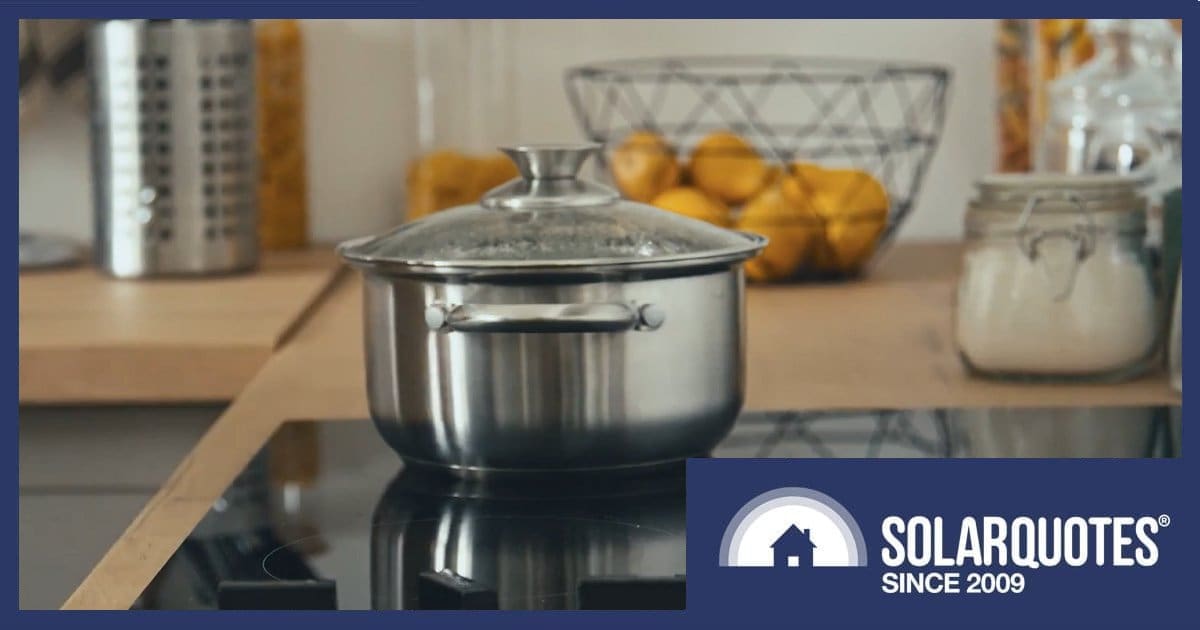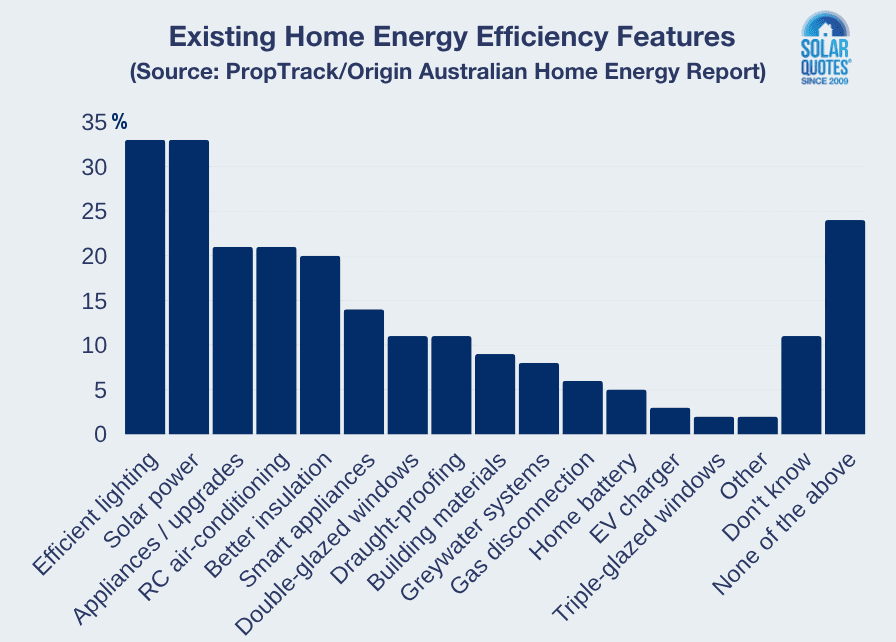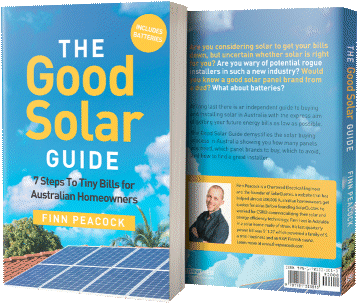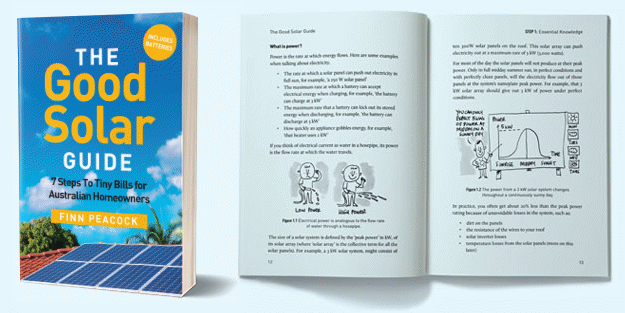
Many Australians are eager to invest in energy efficiency upgrades for their homes, but cost isn’t the only perceived obstacle according to a new report.
The PropTrack/Origin Australian Home Energy Report released yesterday delves into home energy efficiency trends and issues in Australia, based on insights from the realestate.com.au Residential Audience Pulse Survey conducted in January this year.
Understanding
While the terms ‘energy efficiency’ and ‘renewable energy’ had the highest levels of self-perceived good understanding at 54% and 53% respectively, only 34% of respondents indicated good understanding of the term ‘electrification’. Even fewer had a good understanding of ‘NatHERS’ (Nationwide House Energy Rating Scheme), which measures a home’s energy efficiency – just 10%.
Sure, knowledge of terms and jargon is handy, but these terms are just labels and this doesn’t necessarily indicate a lack of understanding of the concepts behind them. But the report says:
“With limited understanding of key energy terms, many Australians are less likely to make informed choices about home energy improvements. This highlights the need for targeted education campaigns to bridge the knowledge gap and encourage action.”
Motivations
The report suggests 68% of Australians consider reducing energy bills as the primary motivation for making home energy upgrades, while 55% also recognised the environmental benefits.
38% said they had experienced climate change anxiety, while 44% believed their individual actions can help Australia achieve a net zero outcome. But just on that, while Australia has set a goal to achieve net-zero greenhouse gas emissions by 2050, only 16% of respondents believed this would be achieved.
Attitudes To Home Electrification
Climate Council analysis released in 2023 indicated electrifying a home’s cooking, heating and hot water can save a household up to $1,311 annually; even without solar panels.
According to the survey, 40% of respondents would consider switching to an all-electric home, 28% would not and 32% remain undecided. The results showed a small fall in the proportion who would consider doing so compared to last year (41%), but a bigger fall among those who said no and an increase in those still on the fence.
Main Challenges
Upfront costs (58%) were noted as the biggest hurdle among homeowners, while renters – and particularly those under 35 (47%) – said lack of control was a key challenge. And only 19% of survey participants believed existing policies, grants and incentives are sufficient to improve the energy efficiency of Australia’s homes.
Harking back to the “understanding” assessment made in the report, only 13% of under 35s, 11% in the 35 – 64 age bracket and 8% of those 65+ noted a lack of understanding on how to make an impact as one of the main challenges to adopting energy-efficient features.
Actions
65% of respondents planning to invest in home energy improvements at some point sounds encouraging, but 44% indicated they don’t plan making any changes in the next five years. Among the reasons behind this, close to 40% don’t know where to where to start, and 45% cited upfront costs being the biggest deterrent.
When respondents who would be making improvements were asked how much they are likely to spend in the next five years to improve the energy efficiency of their current / future home, 30% were uncertain. For those who had a figure in mind the averages were:
- QLD: $8,000
- NSW: $7,900
- ACT: $8,900
- VIC: $7,750
- TAS: $9,600
- SA: $8,050
- WA: $8,350
- National: $7,950
The report says the national average translates to a spend of more than $80 billion nationwide in the next 5 years.
As for actions already taken by respondents, improvements included:
- Efficient lighting: 33%
- Solar power: 33%
- Energy efficient appliances/upgrades: 21%
- Reverse cycle air-conditioning: 21%
- Insulation upgrades: 20%
- Smart appliances: 14%
- Double-glazed windows: 11%
Other actions such as draught-proofing, choice of building materials, greywater systems (?), a home battery, EV charger and triple-glazed windows all came in under 10%. 6% of respondents had disconnected from mains gas supply.
An interesting point was among those looking to sell their homes, just 15% had no energy-efficient features, compared to 24% of all respondents. And 36% of respondents said were willing to pay more for homes with such features.
The full report can be viewed here.
The Energy Efficiency Elephant
As the proverb goes – “How do you eat an elephant? One bite at a time”. Making a home more energy-efficient can be viewed in the same way. SolarQuotes’ home energy efficiency section offers 6 “bites” to help Australians on their way.



 RSS - Posts
RSS - Posts



Improving the thermal efficiency of older Australian homes is probably the hardest nut to crack. Especially weatherboard houses.
It’s the challenge I face with the old Queenslander I own. Short of stripping the weatherboards from the outside and lining the external walls with insulation, anything else is messing around the edges. I’d be far from alone in this. Most other actions are just chipping at the edges.
I’d love to see some technology in this space that makes it possible to upgrade these old homes. Heat rejection is probably the most pertinent. While keeping heat in over winter is a nice to have it’s not as pressing.
At the moment my “solution” has been a battery installation, which will allow me to make use of excess solar for cooling across the night, but that’s not really improving efficiency, just choosing less polluting power.
It is amazing that less than 10% of people identify air leakage through the building envelope as a problem, and solar quotes describes a brick worth of gaps in the average house.
I reckon just 1 exhaust fan in each of the bathrooms and toilets, and kitchen, easily makes up 10 bricks worth of gaps, and these along with window door and joint gaps are easily the lowest hanging fruit that should be addressed rather than worrying about even solar panels, let alone the most expensive option of double glazing.
The reduction in pricing of solar panels does mean that on many fronts it is better bang for buck to capture more sunshine rather than overpay for small efficiency gains,,,,, and even some very good efficiency gains like heat pump HWS can be hard to justify.
That’s me. Much easier to throw PV (and storage) at the problem than put money into trying to make a an old Queenslander have better thermal performance.
Even a resistive element HWS, with decent power control is much less costly over the long term than a Heat Pump.